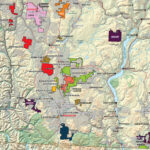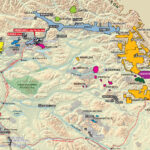Applications
Tungsten is used in filaments in incandescent light bulbs, it is also used in electric contacts and arc-welding electrodes. Tungsten is used in alloys, such as steel, to which it imparts great strength. Cement carbide is the most important use for tungsten; its main component is tungsten carbide (WC). It adds the strength to cast iron and it makes excellent cutting tools for the machining of steel. X-ray tubes for medical use have a tungsten emitter coil and the screen used to view X-rays rely on calcium and magnesium tungstate phosphors to convert X-rays into blue visible light. Tungsten is also used in microchip technology and liquid crystals displays.
Tungsten in the environment
Very little tungsten has been detected in the dew soils, although around an ore-processing plant in Russia levels as high as 2000 ppm were found. The concentration of the element in natural waters is very low.
There are several minerals of tungsten, the most important are scheelite and wolframite. The main mining area is China, which today accounts for more than two-thirds of the world’s supply. Other places with active tungsten mines are Russia, Austria, Bolivia, Peru and Portugal. World production is around 40.000 tonnes per year and reserves are estimated to be around 5 million tonnes. Tungsten can be recycled. Recycled tungsten meets 30% of global demand.


